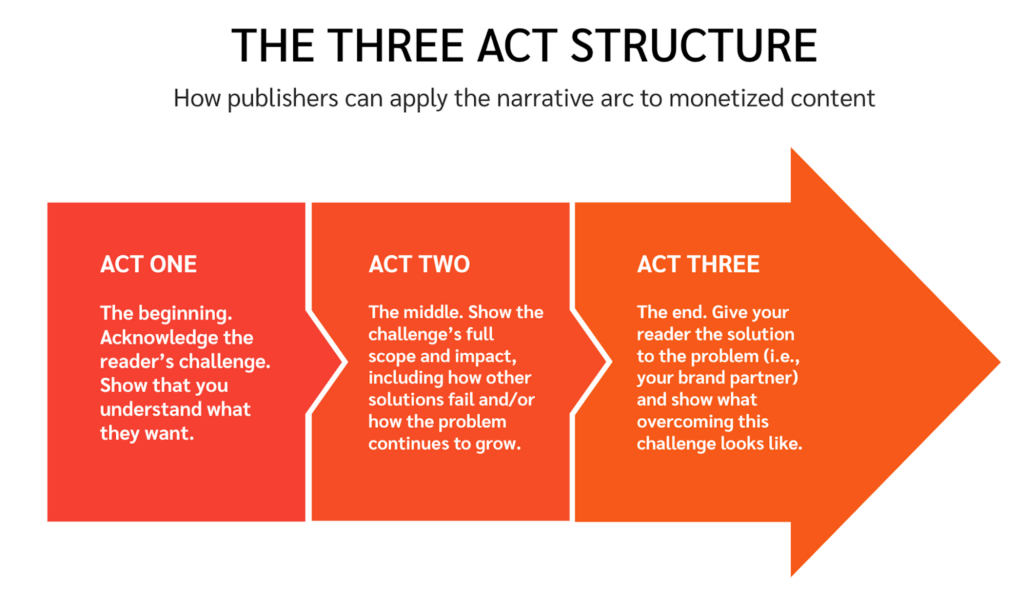For many people, “viral content” means memes and cat videos.
But by definition, content that gains popularity through social sharing is considered viral. It can take the form of visual content, video how-to’s, informational articles, and more—anything goes. So, while fainting goats and sports ‘fails’ inspire laughs, you don’t have to create absurd content to reach virility.
Instead, consider how social sharing and other website recommendations take content to the next level. The most successful publishers know that this is critical to sponsored content success. Pressboard’s 2022 mid-year sponsored content report found that 78 percent of all sponsored content traffic came from either referrals or social media.
But what exactly makes content go viral? Is it luck, or can you intentionally create content people feel compelled to share? Let’s find out.
Jonah Berger’s STEPPS model is the formula for creating viral content
Jonah Berger, a University of Pennsylvania marketing professor and social influence expert, analyzed thousands of viral content pieces. He wanted to understand what inspires people to share. This study highlighted the key components that make viral content irresistible. He published this “secret formula” in his book, Contagious: Why Things Catch On.
According to Berger, you can distill viral content success down to six elements, or “STEPPS”:

Learn the nuances behind each of these STEPPS and how you can infuse them into your content.
1. Social currency: helping people bolster their image
Social currency refers to people’s desire to be seen positively by others. People like to portray a self-image that reflects a certain perception—smart, cool, and interesting.
On social media, a person’s status often depends on the information they proliferate.
With that in mind, content that serves as social currency can easily take on a viral quality. Everybody wants to be seen as “in the know.” Whether they provide the latest recommendations, share knowledge, or pull off the unthinkable—the most valuable content is highly shareable.
You can use social currency to create high-quality, creative content that engages readers. When done right, it can even help you become a trendsetter in your niche.
How to incorporate social currency in your content
Think about your audience. What kind of image do they want to project online? Who are they trying to impress? Once you know that, you can create content they value—and that’ll help readers boost their image when they share.
According to Berger, there are three main ways to imbue brands with social currency. Here’s how that applies to content:
- Remarkability. When you find something unique or cool, you can’t wait to share it with others. Get creative with your content. Create pieces people have always wanted to see (or never even thought to ask about).
- Game mechanics. Games engage because they position the user as a participant in the content. Create interactive content or tools that maintain audience interest and add a layer of remarkability to the content.
- Exclusivity. Having access to scarce resources makes people feel important. Make your audience feel like insiders. Give them information they can’t find anywhere else.
Social currency in action

As an example, StyleCaster’s Return to Fashion project, created in partnership with SHEIN, utilizes multiple social currency principles.
The eye-catching interactive format, complete with animation, is more engaging than a static piece. It also leverages the star power of beauty influencer Camila Coelho. The project provides exclusive content about her life and fashion sense.
2. Triggers: making your content memorable
A trigger is a word, phrase, or image associated with a message. Anything that reminds your audience of a product or brand is a trigger. For example, you can’t see an American Pekin duck without thinking about Aflac.

Triggers inspire people to talk about you—even when you’re not actively pushing a message to them. This is why Berger emphasizes the importance of consistency, saying that “top of mind means tip of the tongue.”
Once you establish a trigger, you can expand your reach and generate word of mouth more easily.
How to incorporate triggers in your content
When creating content that utilizes triggers, focus on the events, activities, or situations that inspire your audience to seek out information from you. What will make them want to get information (and share it) specifically from you or your publication? When and where will they look to you for guidance?
The most effective triggers should be:
- Unique. A trigger should only be associated with your content.
- Encountered frequently. Your audience should come across this trigger in their environment often.
- Long-lasting. Ideally, triggers will remain relevant to your audience (and their environment) for a long time.
Cultivating a consistent voice and niche creates positive triggers that readers can remember easily. Also, find the right brand partners that suit your publication. Ensure the brands you work with have positive triggers that align with your values to make your content more shareable.
Triggers in action

Clean Eating’s article sponsored by Vermont Tourism shows how aligning brand and publisher values can make magic.
Clean Eating provides articles relevant to people who want a healthier, greener lifestyle. Vermont is renowned for year-round outdoor recreation, rural landscapes, and a bohemian outlook. These ideas easily connect, helping the content feel natural and relevant.
3. Emotion: inspiring people to share their passion
The third element in Berger’s viral formula is emotion. Unsurprisingly, people tend to share content about topics and stories they care about.
People like to talk about their feelings. When we have strong feelings, we process them in our limbic system. Neurological studies show that when we talk about emotions, processing shifts to the parts of the brain that deal with language and meaning. This is why many feel better venting or sharing exciting news.
If you inspire people to talk about how your content made them feel, they want to share it.
How to incorporate emotion in your content
Choosing your audience—and knowing them—is important in your quest to create viral content. What will excite your readers? Creating audience-centric pieces they care about is the best way to engage them.
High-arousal emotions—such as awe, laughter, and even anger—are the most effective for increasing virality. But it’s good practice to avoid anything sad or negative, especially when creating sponsored content. Words like “cost” or “damage” may prompt negative emotions. Instead, use snappy trigger words like “easy” or “new” and pepper your content with exclamation points.
Emotional content also needs to suit your publication and align with the ethos of the brands your content promotes.
Once you know what emotion you want to provoke, some simple ways to infuse it into your content include:
- Use powerful, emotive language
- Include shocking facts or data (see the practical STEPPS principle)
- Leverage emotional hooks (see the storytelling STEPPS principle)
Emotion in action

For example, Narcity’s article sponsored by GoFundMe highlights feel-good stories from Canadian donors and organizers making a difference.
The charitable angle naturally inspires emotion. Each person also explains their philanthropic passion in their own words, giving it a personal touch. This culminates into a heartwarming piece of sponsored content with high sharing potential.
4. Public: giving your audience permission to share
Berger uses the phrase “built to show, built to grow” to describe the public element in his six STEPPS. Humans are inherently social creatures, and we often imitate each other without realizing it. But to kick off this “copycat” behavior, you need an initial group of people to see the idea (or, in this case, content) first.
Promoting a piece of content frequently to ensure your audience sees it often keeps it top-of-mind and encourages sharing. Once your content begins gaining traction, you’ll find that your initial level of exposure will compound over time.
How to incorporate the public principle in your content
Don’t just create content and hope people will stumble upon it. Cultivate a robust content amplification strategy with strong distribution channels, like social media and email lists. It exposes your content to engaged audiences and gives it a running start at going viral.
Public events and news—think announcements or current events—generally fare better than promotional content. But a public element can be applied to more informational pieces, too.
Keep Berger’s “built to show, built to grow” mantra in mind. Ask yourself: is there anything that would stop your reader from sharing this article?
Sensitive topics, polarizing opinion pieces, NSFW content, and unrelated information can prevent people from sharing. Always create content that your audience wants to show off. Like the social currency principle, viral content needs to bolster the sharer’s social standing rather than being a potential liability.
The public principle in action

Let’s look at an example. Pressboard’s mid-year benchmark report found that Narcity’s article with Cora Breakfast and Lunch Restaurants had the highest percentage of all traffic coming from social media in H1 2022.
Cora’s is beloved in Canada, and the article revolved around the restaurant’s highly promoted limited-time event. The content highlighted delicious, aesthetically pleasing foods that people wouldn’t hesitate to post on their platforms. It’s a winning recipe for shareability.
5. Practical value: infusing your content with benefits
Apart from being seen as in the know, people also want to be knowledgeable and share that knowledge with others. One way people do this is by sharing high-quality information with their network.
The benefit? More word of mouth for you.
Creating highly valuable content for your audience encourages sharing and facilitates better engagement and time spent on a page. It can also create a consistent traffic source. Focus on crafting content your audience can return to and use as a resource for years to come.
How to incorporate practical value in your content
Consider your audience’s interests or pain points. What questions do they have? What information are they looking for? Why should they turn to you for the answers?
For example, say your target audience is recent graduates looking to buy a vehicle. Offer car maintenance tips or answer frequently asked questions about purchasing a new car.
To make high-quality content with practical value, include these essential qualities:
- Comprehensiveness. Dive deep into the topics that your audience cares about. Address their question from start to finish to help them solve their problem.
- Research. Back up claims with recent stats and figures where possible. Even better if the research is produced in-house or by your brand partner.
- Authority. If your publication or author of a piece has expertise on the topic at hand, emphasize it. Draw on that knowledge to give your content a unique perspective.
- Readability. The content needs to be accessible to your audience and speak to them where they are in their journey. Don’t use jargon they won’t understand or dive too deeply into advanced topics in a piece just covering the basics.
The practical principle in action

The Houston Chronicle’s how-to guide produced in partnership with AUVI-Q, an Anaphylaxis medication, embodies the practicality principle.
The article offers a holistic roadmap for parents introducing potential allergens to children. Despite using research and information from industry experts, the piece presents complex medical information in an approachable, engaging way.
6. Stories: delivering your message in a powerful package
Great content ideas that tell a story are the greatest way to deliver a message. People pay attention to stories because the narrative structure changes how we think and feel. Cognitive psychologist Jerome Bruner estimates that we’re 22 times more likely to remember a fact when it’s wrapped in a story.
According to Berger, storytelling increases virality because:
- Stories act as social currency. Telling stories makes people seem more interesting.
- Stories evoke emotion. Storytelling inspires more emotions than simply listing facts and figures, and emotions make your content stickier.
- Stories are interesting. People are more engaged when following a journey rather than reading through facts.
How to incorporate story in your content
Most publishers are already excellent storytellers. But even the most seasoned spinner of yarns can find it challenging to weave a narrative into sponsored content.
Ensure that your brand partner is integral to the story. Also, bring your reader or viewer into it. Place them into the narrative arc so they can be absorbed into the story.

Make your audience the hero of the story and they will re-tell it over and over again. Give your reader fuel for lunchroom conversation, Zoom water cooler talks, or drinks with friends.
Stories in action

The Dad’s video series, created in partnership with Char-Broil, tapped into the power of story and got significant results.
The comedic series showcased a Dad’s love for his grill and how his family reacts to it. The series presented an engaging narrative arc the audience could easily project themselves into, making it even more funny and memorable.
Using viral content to increase audience size (and revenue)
When content goes viral, it may seem like luck or chance, but in reality, these six STEPPS are key.
You might already be using some of Berger’s tips to make your content more engaging. But leveraging them consciously in your commerce or sponsored content campaigns translates to a wider audience. This ultimately enables you to bring in more revenue.
Using Berger’s research isn’t the only way to grow sponsored content revenue. Pressboard by impact.com—a part of the impact.com for Publishers suite—enables you to supercharge your sponsored content engine. With helpful tools like automated dashboards and reporting, the impact.com for Publishers suite helps you take content monetization to the next level. See how.






